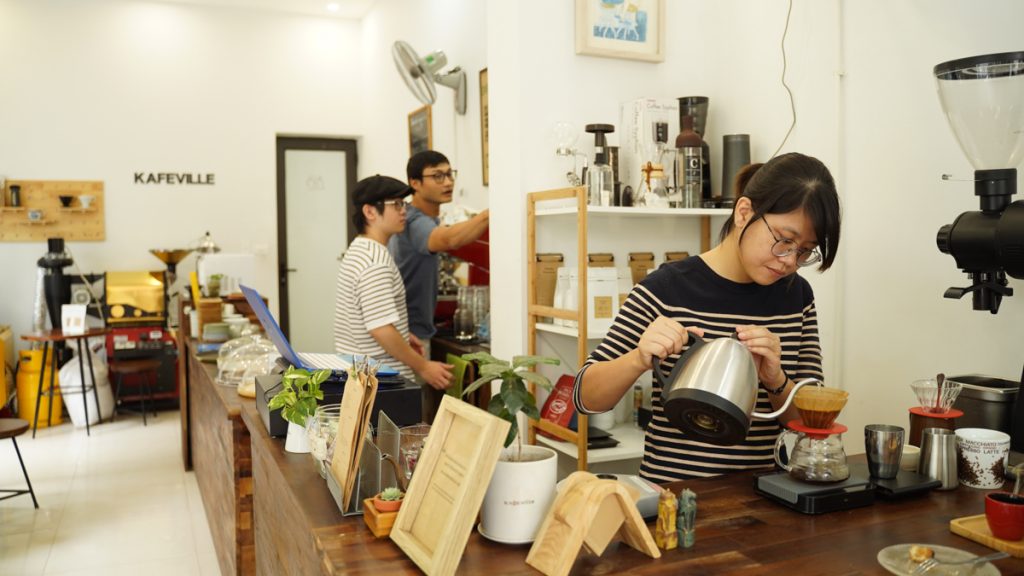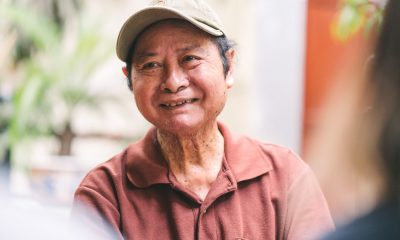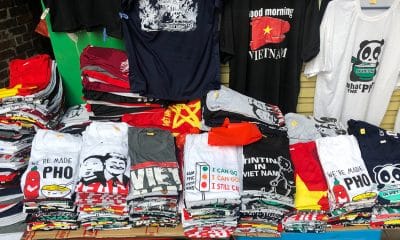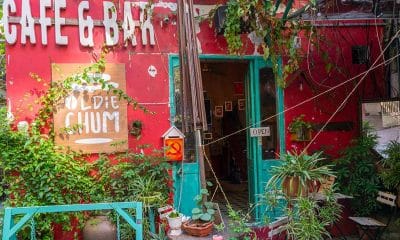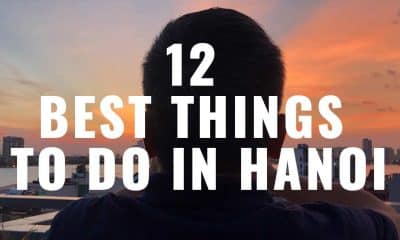Art & Culture
A century of coffee shops: 10 must-try Hanoi hangouts
When it comes to cafes, Hanoi lays strong claim to being Asia’s coffee capital
Published
5 years agoon
By
Joshua Zukas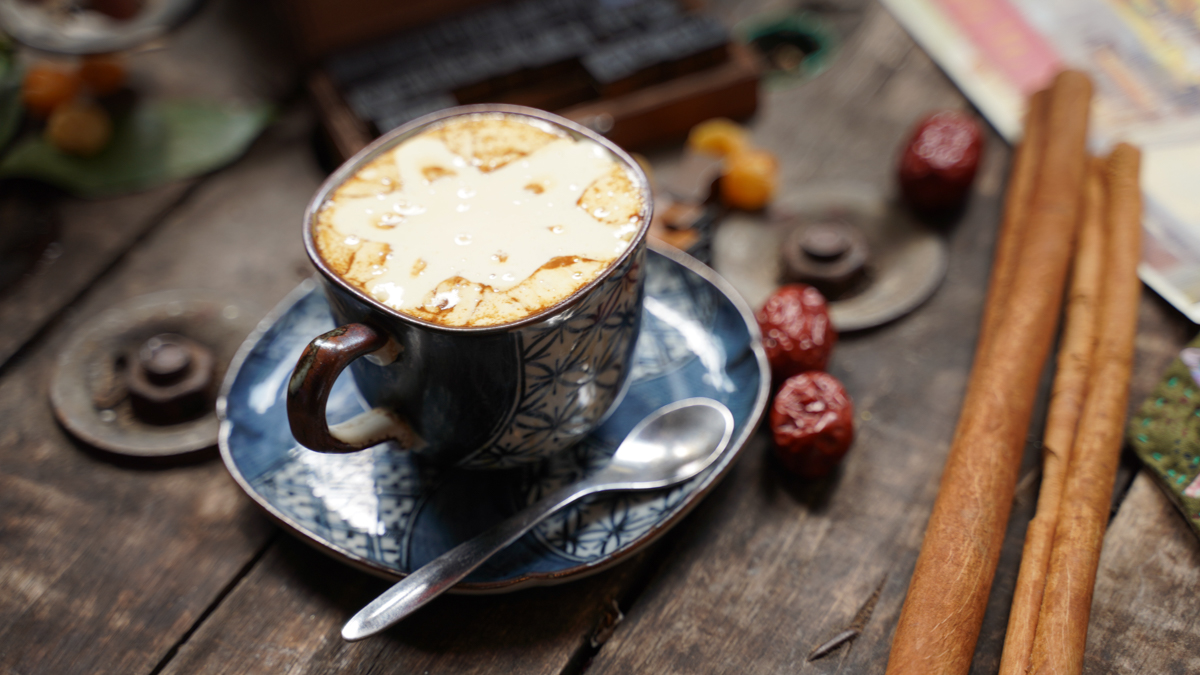
With a rich coffee-drinking history, innovative native creations, and a localized approach to the so-called third wave, Hanoi’s café culture is like no other. Here’s a walk through ten establishments that prove that when it comes to coffee shops, Hanoi is king.
It’s a warm, breezy Friday afternoon and a score of youths sit huddled beneath the drooping trees and tangled electricity lines in Hanoi’s French Quarter. Soon summer will end, the mercury fall, and the city see milk flower trees in full bloom, charging the air with the perfumed scent of autumn – Hanoi’s most congenial season. The youngsters, most of whom are in their late teens or early twenties, sit on tiny plastic chairs slurping Vietnam’s world-renowned pick-me-up: ca phe sua da (iced coffee with condensed milk). A young lady buzzes around bringing the sweetened rocket fuel to the eager patrons, regularly braving the roaring road that divides the coffee shop in two. When the café is busy, like on most Friday afternoons, it spills over to the opposite side of the street.
Introducing street coffee: Ca Phe Thai
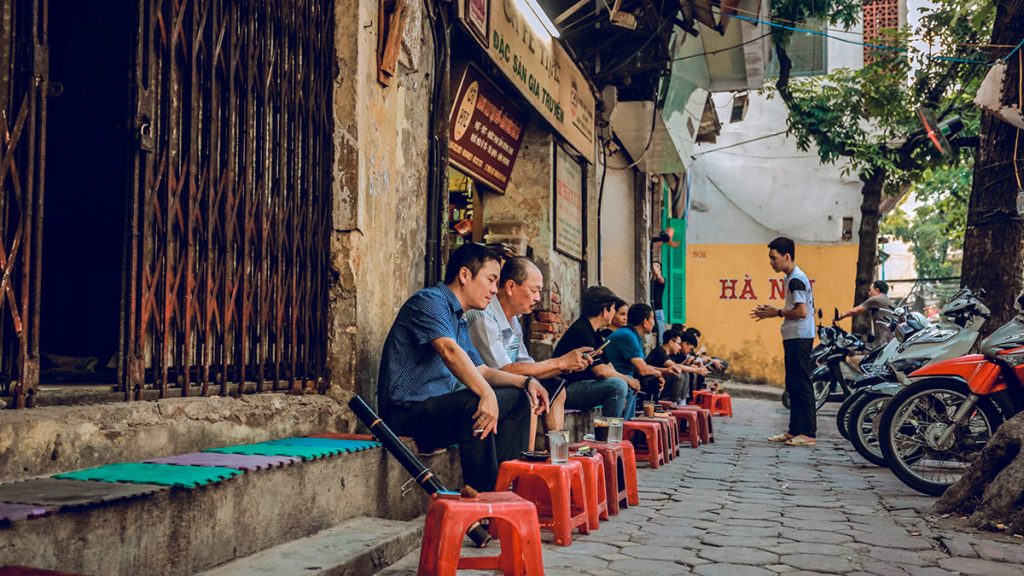
This is a typical scene at Ca Phe Thai (27 Trieu Viet Vuong, Hai Ba Trung), a coffee shop that’s seven years shy of celebrating its 100th birthday. Ca Phe Thai is one of Hanoi’s oldest coffee shops, surviving decades of colonial oppression, warmongering carnage, communist suffocation, and capitalist chain stores. Despite all this, Ca Phe Thai still stands – or sits – proud, right on the street. And if the juvenescence of its customer base is anything to go by, Ca Phe Thai won’t be unseated any time soon.

Unlike many other café-loving capitals in Asia, coffee shops in Hanoi have been an integral part of the city for generations. The French established coffee farms in Vietnam in the 19th century, and while most of the yield was for export, some beans were kept back to caffeinate urbanites in Hanoi, Hue, Saigon (now Ho Chi Minh City), and other Vietnamese cities. Despite the horrors that plagued Hanoi during colonialism and its aftermath, the city was hooked and unwilling to give up the black stuff. At wartime when milk was short, alternatives were found. During Communist coffee shop clampdowns, sly servers simply took to their bicycles. And while remnants of the city’s coffee shops from the early 20th century still remain, such as Ca Phe Thai, a whole host of new establishments provide unrivaled variety in the city.
Brewing tradition: Duy Tri
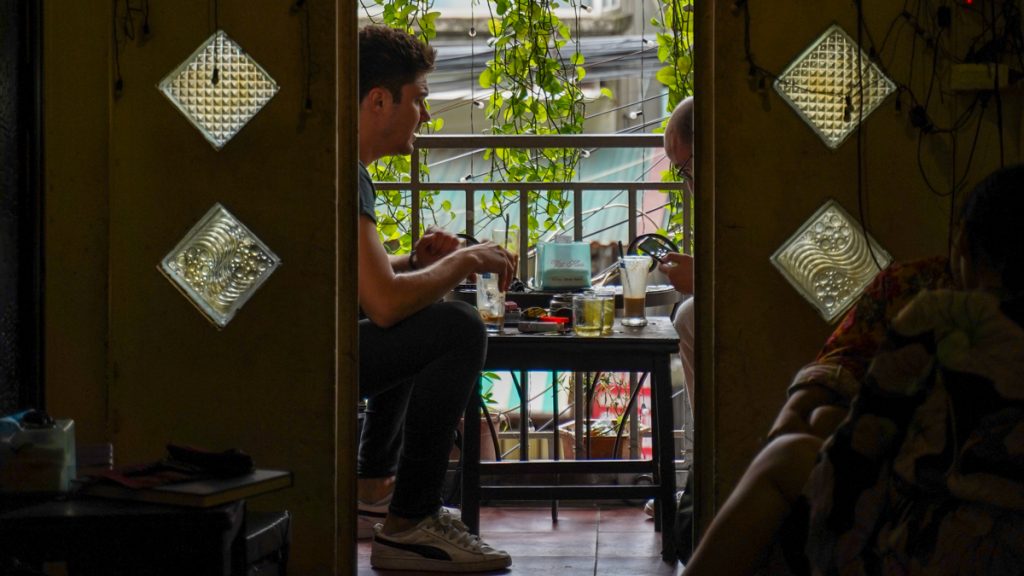
Ca Phe Duy Tri (43 Yen Phu, Tay Ho), which opened a decade after Ca Phe Thai in 1936, is another Hanoi institution. The coffee shop first opened on Mai Hac De, just a few steps from Ca Phe Thai, before moving around the Old Quarter and French Quarter during Vietnam’s more turbulent years. They settled in their current location, buried in a tube house close to West Lake, in 2000. The unapologetically dated interiors would make Ca Phe Duy Tri seem like any other old Vietnamese café were in not for the ancient coffee grinders displayed at the entrance. The unmistakable scent of freshly ground coffee fills the café throughout the day – proof that the grinders aren’t just for show.
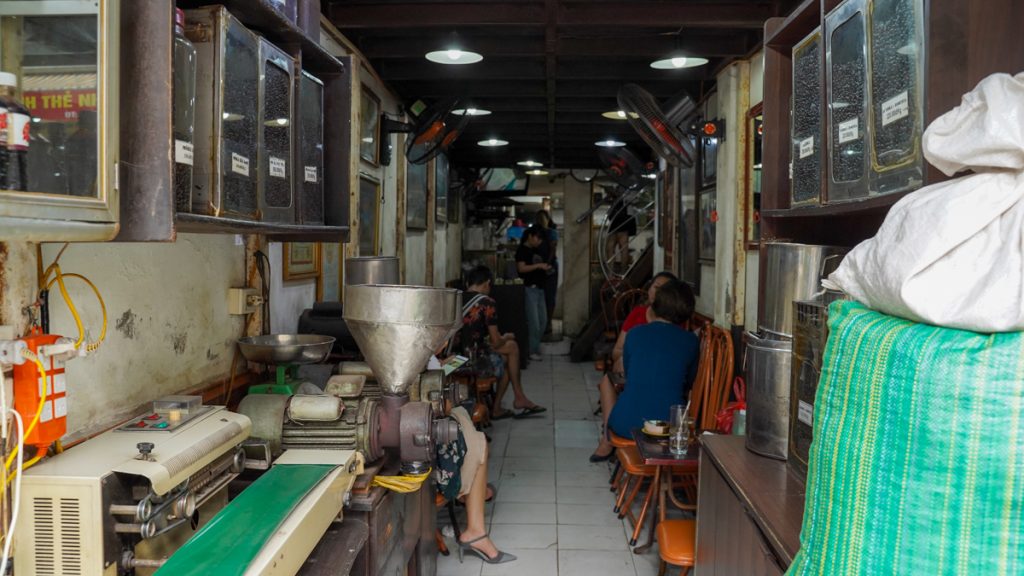
Ca Phe Duy Tri is one of the best places in the city to sample the local brew. The narrow three-story coffee shop also offers a range of places to sit, from a coveted balcony to a bustling first-story corridor where passers-by will brush your knees. The walls are decorated with family photos and awards from various local coffee associations. Ca Phe Duy Tri has long-established relationships with suppliers from Vietnam’s highlands that grow and roast their Robusta beans (not the Arabica used for espresso.) Once ground, they brew the coffee over several hours in huge metal filters, bottle it, refrigerate it and serve it within a day.
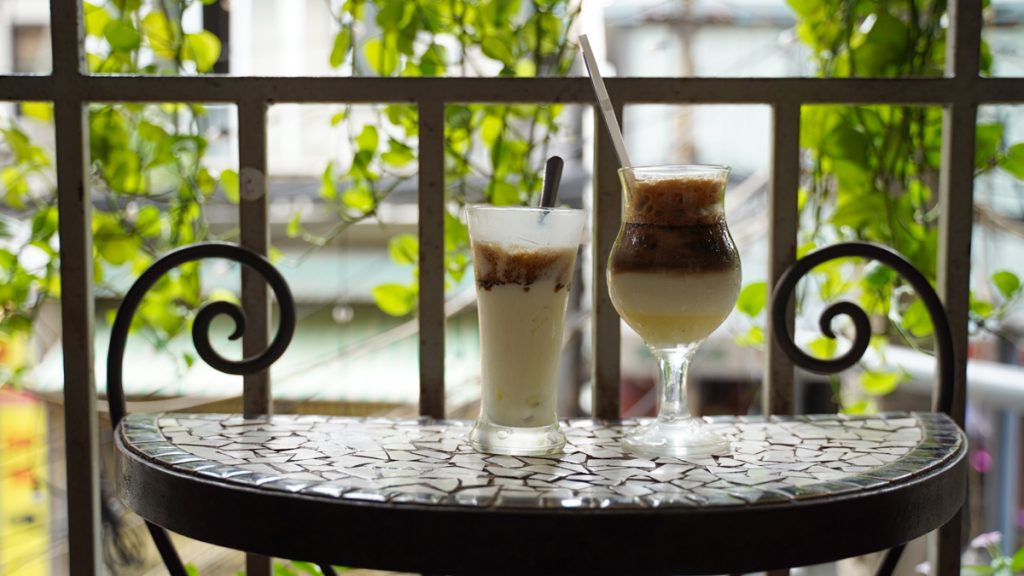
“Usually we serve the pre-filtered coffee because it’s ready there and then,” Pham Thanh Huong says. The rosy-cheeked 49-year-old granddaughter of Ca Phe Duy Tri’s original founder and namesake is as casual as the café, dressed in simple black trousers and a peach-colored top. Most customers at Ca Phe Duy Tri take their coffee with ice, especially during the scorching Hanoi summers, which is suited to the pre-filtered brewing method.
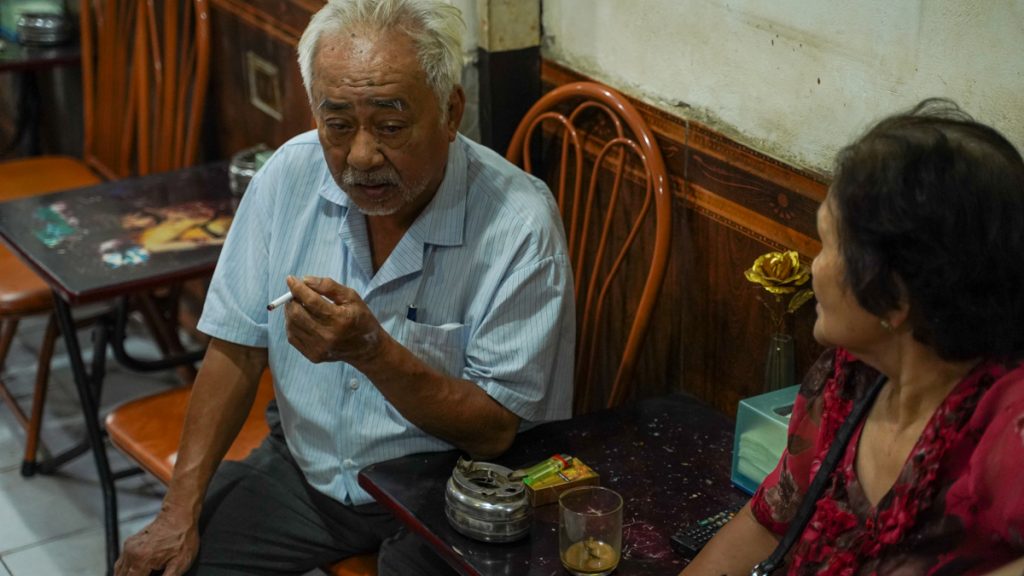
The other traditional way of brewing Vietnamese coffee is through a small metal filter that sits on the coffee cup. The filter is packed with ground beans and hot water is poured over the top. After the coffee slowly filters straight into the cup, it’s ready to drink. Ice and condensed milk are optional additions. But this can take up to 15 minutes, Huong says. “If customers want something hot or prefer freshly-brewed coffee – and they have the time to wait – they can order the small filter instead.” Ca Phe Duy Tri has also earned a reputation for their sweet and sour homemade sua chua (yogurt), which can be mixed with coffee in a sua chua ca phe (yogurt coffee).
Milk alternatives: Café Giang

The Vietnamese have been mixing milk alternatives with coffee long before almond milk became fashionable in the West. Café Giang (39 Nguyen Huu Huan, Hoan Kiem), established in 1946 by Nguyen Van Giang, has become a must-visit coffee shop for visitors wanting to try a more unusual alternative to milk than yogurt: egg yolk. Like Ca Phe Duy Tri, Café Giang moved around various locations before finding its current home ensconced within an Old Quarter alley.
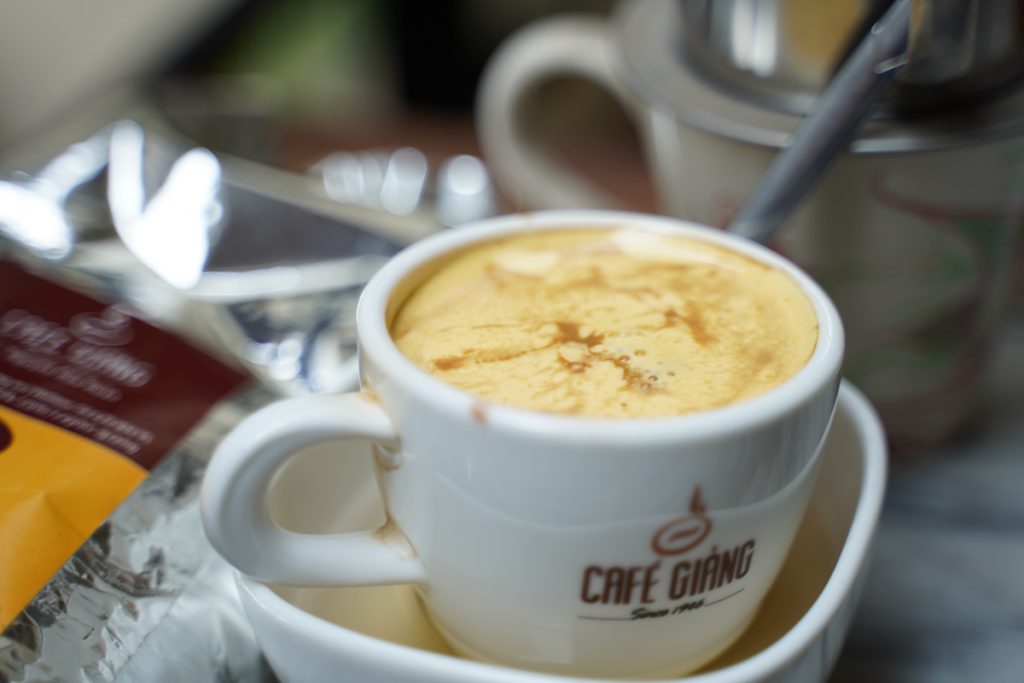
Legend has it that during the war when times were hard, milk was difficult to come by. Hanoians were in need of something to lessen the bitterness of their homegrown beans, so innovative barista Giang, who worked in the fabled Grand Hotel Metropole (now Sofitel Legend Metropole Hanoi), experimented with egg yolk. Eventually he found a recipe that worked, and although the precise ingredients remain a family secret, it reportedly includes butter and cheese. Ca phe trung (egg coffee) was born, and these days condensed milk is thrown into the mix to sweeten things up.

Reinventing a classic: Loading T
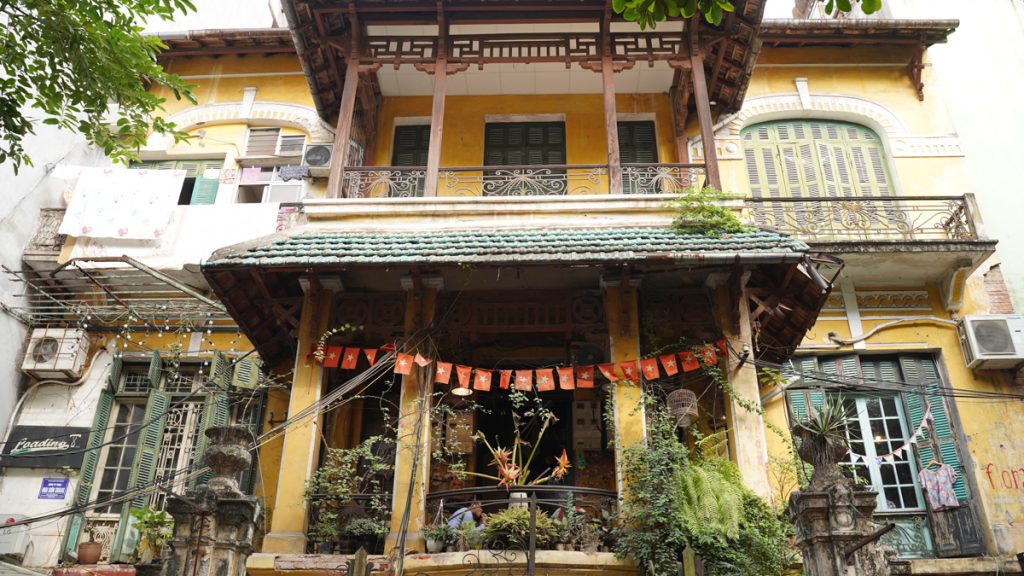
Coffee baristas have been innovating ever since. Housed in a segment of the Old Quarter’s grandest colonial mansion from the 1930s, Loading T (8 Chan Cam, Hoan Kiem) is one of Hanoi’s most atmospheric establishments. The coffee shop is adorned with period features, including patterned floor tiles, exposed original brickwork, and towering window shutters that allow light to stream in on a sunny day. There’s also a small outside table that rests proudly at the top of the mansion’s commanding imperial staircase. Loading T was set up by husband and wife Hoang Tuan Son and Nguyen Hong Trang in 2014.
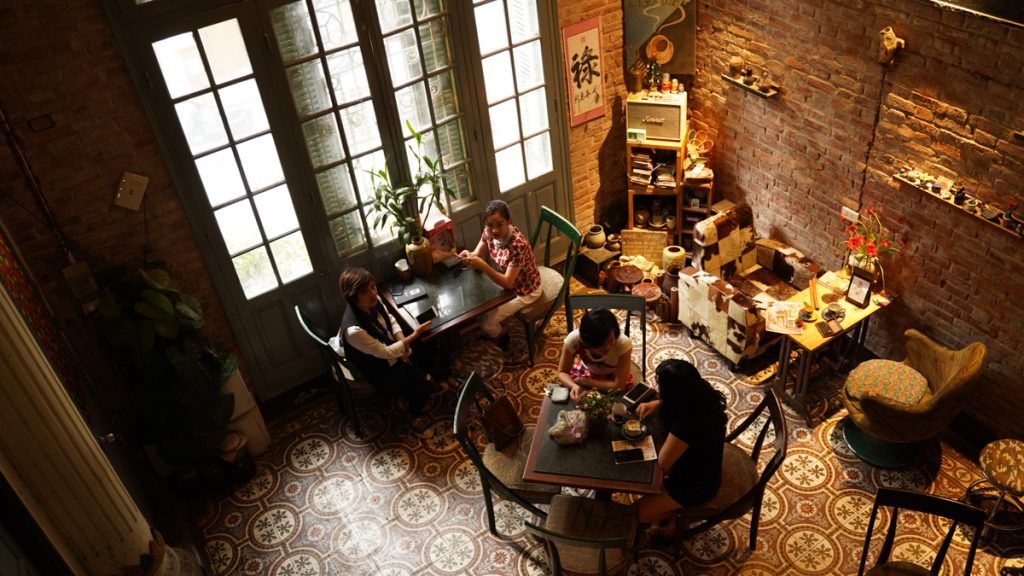
The coffee shop is worth hunting out for the architecture, but the coffee also offers a different caffeine experience to other coffee shops. Forty-year-old Son specializes in traditional Vietnamese filter coffee, but he infuses it with cinnamon to give it something special.

“I was set on serving traditional Vietnamese coffee… but I wanted to do something different,” says Son in ripped jeans and a camouflage t-shirt. His rugged fashion coupled with a shaved head does little to detract from his gentle nature, demonstrated by the way he fawns over his two young daughters. “It was kind of an accident. One day my wife came home with some cinnamon and I thought: Why not? After a few attempts at brewing the coffee with cinnamon I found a method that works, and people seem to really like it,” Son says. Son also makes a mean egg coffee with cinnamon added to the flavor profile, which proved so popular that it was featured by CNN in 2017.

Challenging capitalism: Café Cong

Whether historic like Ca Phe Thai or contemporary like Loading T, independent establishments are the bedrock of Hanoi’s coffee shop culture. But one franchise demonstrates that Hanoian coffee shops can scale while still remaining true to their roots. The very first Cong launched in 2007 on Trieu Viet Vuong. The concept, which plays to Hanoian nostalgia with an interior design concept inspired by northern Vietnam’s 1970s and 80s, proved so popular that Cong franchised in 2013. Today there are 32 outlets in Hanoi (many more locations than global coffee giant Starbucks) as well as branches in most major cities in Vietnam. And with four Congs in South Korea and more rumored for Singapore, the brand seems set on going global.

“I found out about Cong through one of my English teachers,” says 32-year-old Nguyen Ha Linh, part of the first team that franchised Cong. In 2016 the serial entrepreneur was listed in Vietnam’s Forbes 30 Under 30. “After visiting for the first time, I just kept going back. I used it for meetings, socializing, working… it was just such a cool concept.” Today Linh has invested in four outlets, including the wildly popular Cong (27 Nha Tho, Hoan Kiem) facing St. Joseph’s Cathedral. Beyond innovating an infectious design concept, Cong also advanced Vietnamese coffee with their own milk alternative: coconut milk.

“I think Cong is bringing café culture to the next level, especially with our coconut coffee,” says Linh, referring to Cong’s signature drink. Much like Café Giang’s egg coffee, this blend of Vietnamese coffee, coconut milk, condensed milk, and shaved ice, has become a quintessential must-try for visitors to the city, as well as a local favorite. Nguyen Linh Dung, the founder of Cong, created ca phe cot dua (coconut coffee) before the coffee shop franchised.

Groups against chains: Tranquil, Blackbird, and Hai Bon
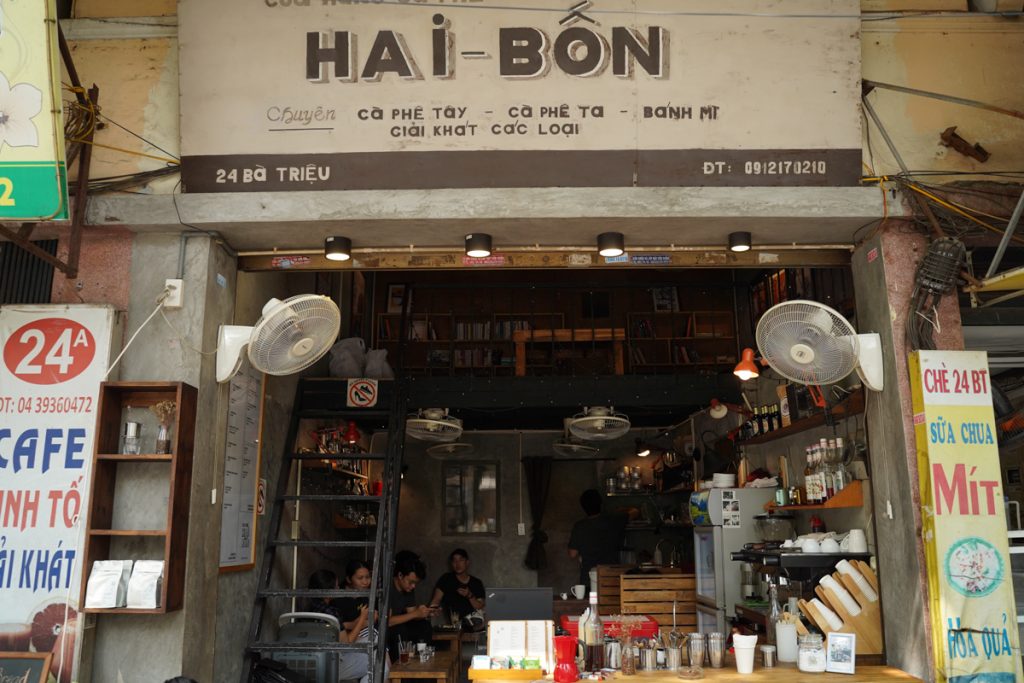
But Hanoi’s most popular coffee shops don’t have to be national brands set on regional domination. Thirty-seven-year-old Hanoian Ben Khuat co-founded a group of nine coffee shops across three brands, all of which are nestled within central Hanoi. “We expanded like this to give our customers choice,” says Ben Khuat, taking small sips on a cappuccino that he made himself. “Each brand has its own distinct character.”
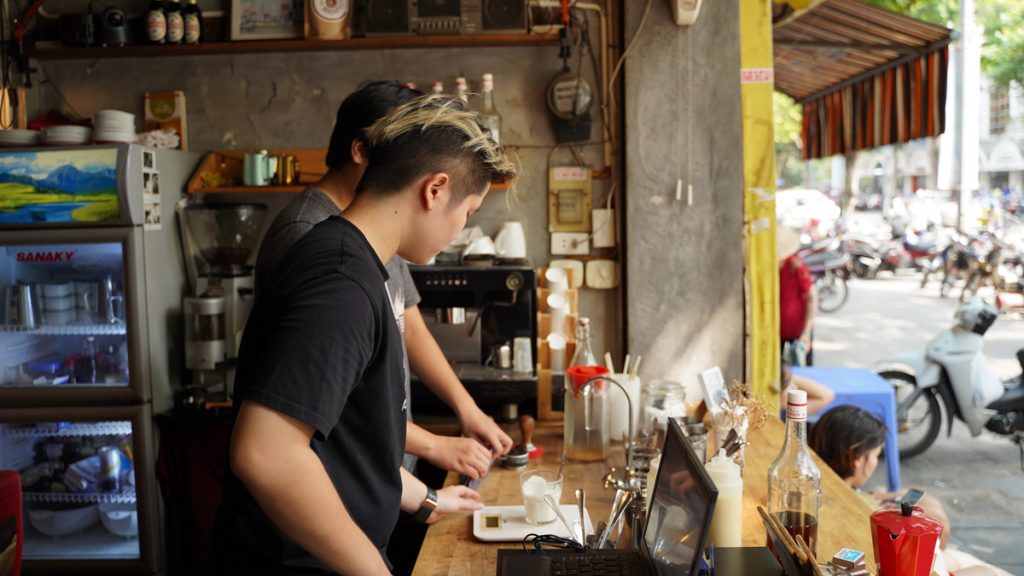
The first Tranquil (5 Nguyen Quang Bich, Hoan Kiem) launched in 2015 as a quiet space decorated with books and crafted for reading. Hai Bon (24 Ba Trieu, Hoan Kiem) first opened right on the sidewalk to reduce overheads and offer quality coffee at street level. Blackbird Coffee (5 Chan Cam, Hoan Kiem) opened directly opposite Loading T in 2018 and prioritizes quality coffee above all else. Today there are five Tranquils, two Hai Bons, and two Blackbird Coffees.
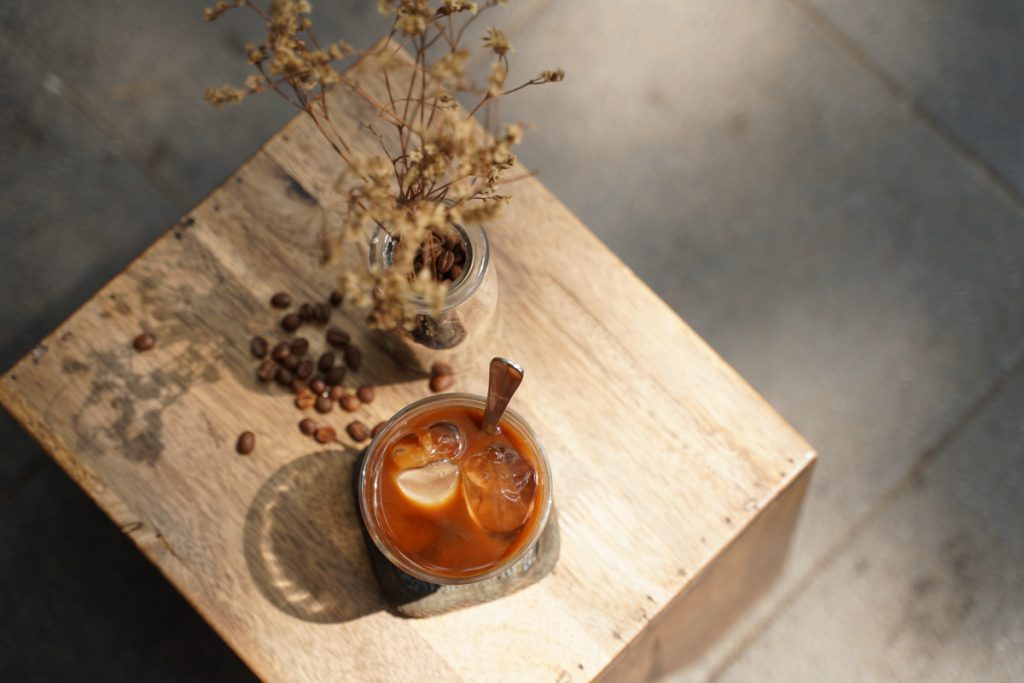
Unlike big franchises like Cong, Ben doesn’t want his group spreading too far from central Hanoi. Keeping the coffee shops close to one another is a way to maintain quality and keep the team close. If one Tranquil is busy and the staff are overwhelmed, a barista can move from a quieter Tranquil and be there in minutes. This ensures a quality customer experience and demonstrates to his staff that support is always at hand. “Distance kills the synergy,” Ben says.
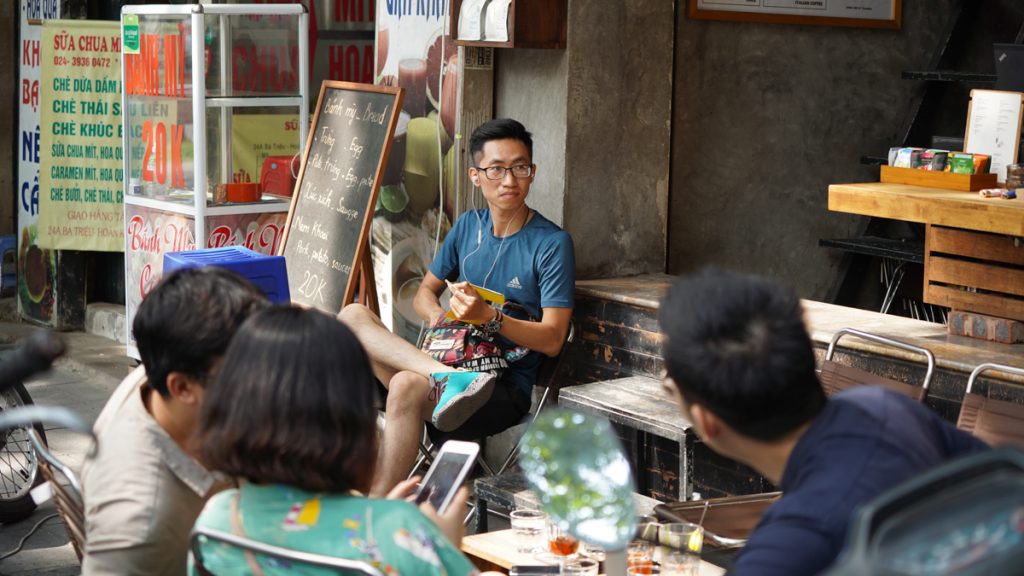
East-West blend: Café Yen

Tranquil, Hai Bon, and Blackbird Coffee have all embraced western coffee, with a menu that displays espresso-based drinks next to the traditional brew. But they’re not alone. In the past five years, quality Western coffee has swept through the city, though many coffee shop owners are still keen to include elements of Hanoi’s traditional coffee shops. Tucked down an alleyway near Truc Bach Lake sits Café Yen (184 Quan Thanh, Ba Dinh.) Like Ca Phe Thai, they serve coffee right on the street at affordable prices, but unlike Ca Phe Thai, they only serve quality Arabica sourced from Vietnam’s Central Highlands.

“I still use Arabica for my Vietnamese coffee, but I use dark roasted beans, which helps to soften the sourness and brings out the bitterness expected from Vietnamese coffee,” says Nguyen Duy Minh, who co-founded the coffee shop with his girlfriend in 2017. “For the espresso-based drinks I use medium roast.” Minh has also crafted a whole menu of signature coffees to help Vietnamese people adapt to a sourer bean. For example, the Van Van looks like a frothy cappuccino, but it’s served cold with sweetened milk that suits local tastes.
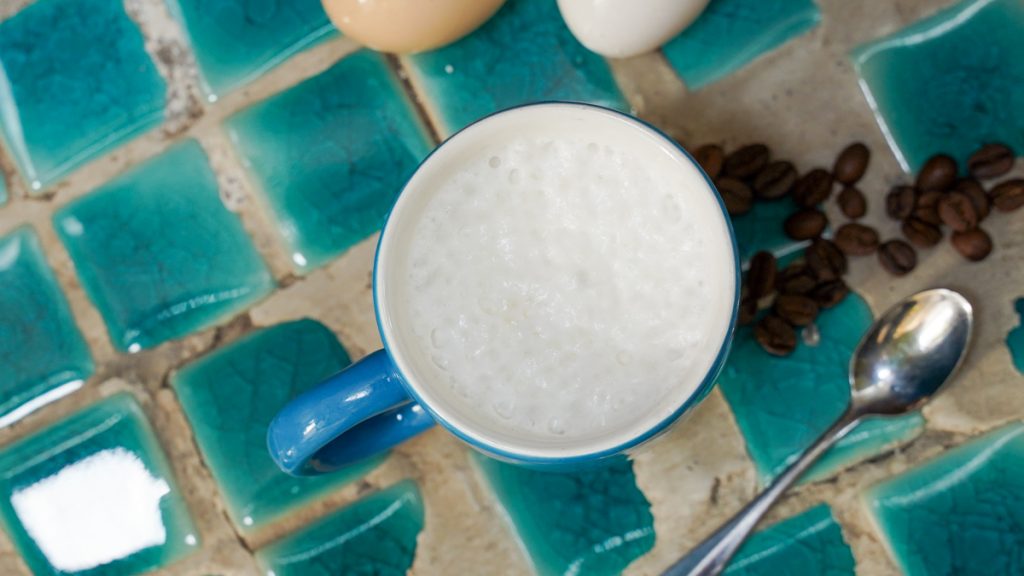
Vietnam’s third wave: Kafeville

The third wave of coffee, a term coined two decades ago in the United States, refers to an appreciation of premium coffee, a deep understanding of where it comes from, and knowledge of how it’s grown and roasted. Third wave coffee shops don’t just serve the highest quality coffee, but also educate their customers about it. Kafeville (23 Pho Yen Ninh, Ba Dinh) is one of Hanoi’s most respected third wave coffee shops, meticulously sourcing beans from Vietnam and abroad. They are one of the few Hanoi coffee shops that roast their own beans, supporting a menu of espresso-based, traditional Vietnamese, and alcoholic coffees.

Kafeville was also one of the first coffee shops to introduce pour-over coffee to Hanoi, which shares similarities with the ways that traditional coffee shops like Ca Phe Thai and Ca Phe Duy Tri brew their coffee.“We actually know Ca Phe Thai really well,” explains Luong Thanh Binh, the 37-year-old that set up Kafeville in 2016. Despite being a leader in innovating the coffee scene in Hanoi, he has huge respect for Hanoi’s humble coffee shop beginnings. “Ca Phe Thai has been going for four generations and a member of the youngest generation worked with us for six months. He wanted to learn about managing a coffee shop and ensuring quality control, which are ideas he took back to his father to help make a better Ca Phe Thai.”
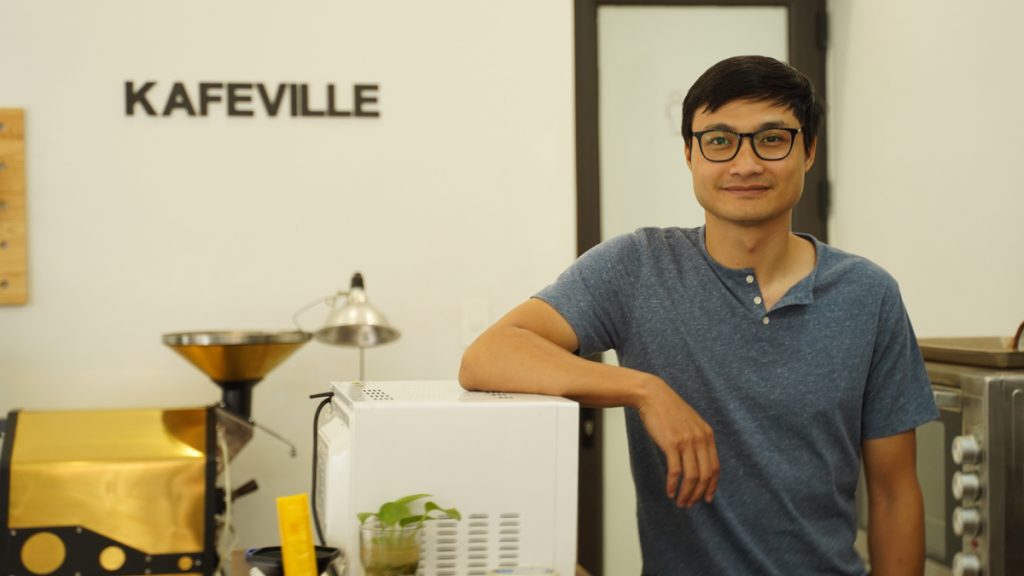
Kafeville opened 90 years after Ca Phe Thai and on the surface they seem like completely different establishments. But dig a little deeper to discover that there are also striking similarities: they’re both Hanoi institutions committed to nurturing and advancing Hanoi’s love for the black stuff. Perhaps the relationship between Kafeville and Ca Phe Thai reflects the secret to Hanoi’s coffee shop capital status. Café culture in Hanoi is not cyclical. Nor is it evolutionary. It’s both. Hanoi is where traditional ideas are revisited by innovators and new concepts are accepted and implemented by veterans of the trade.
